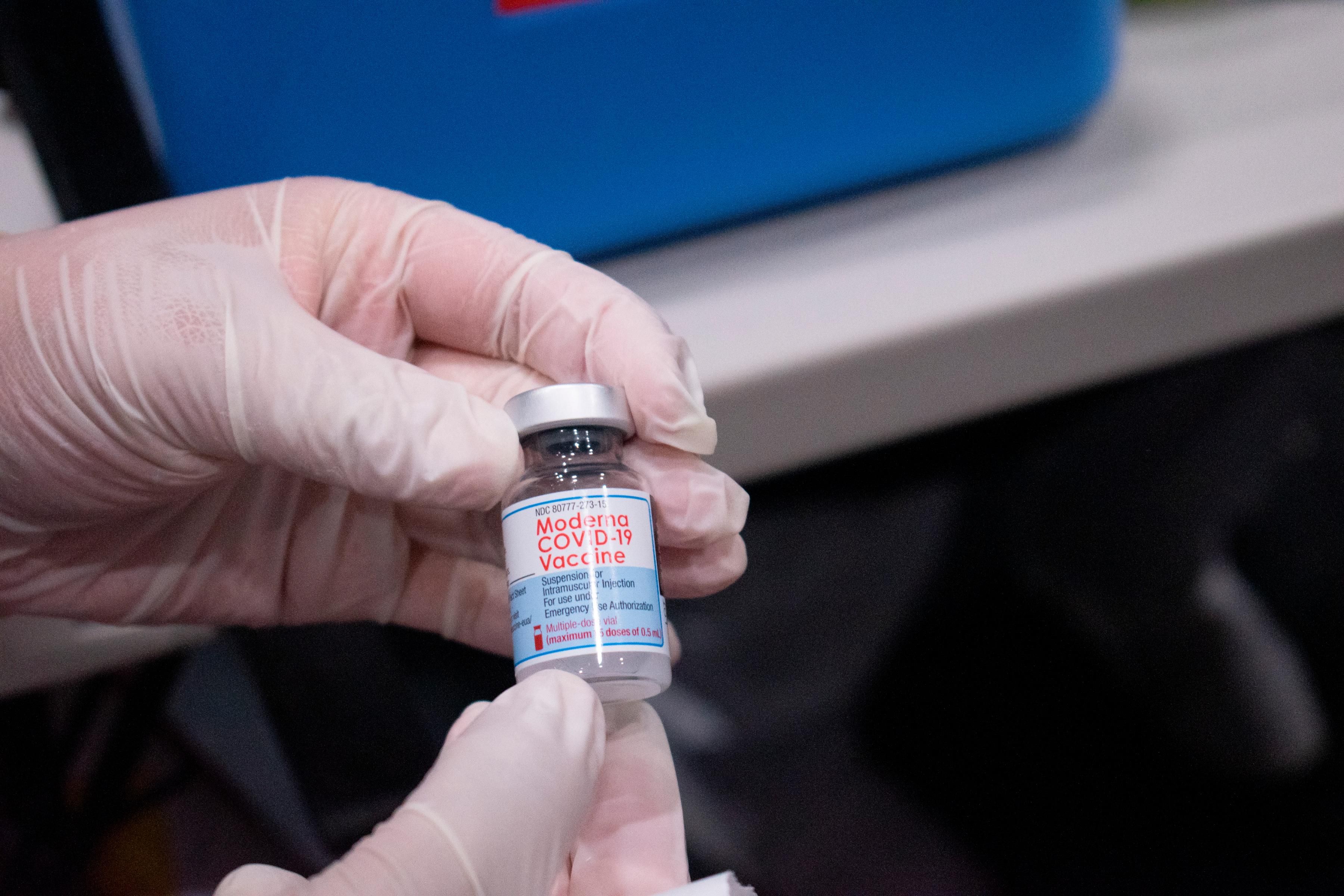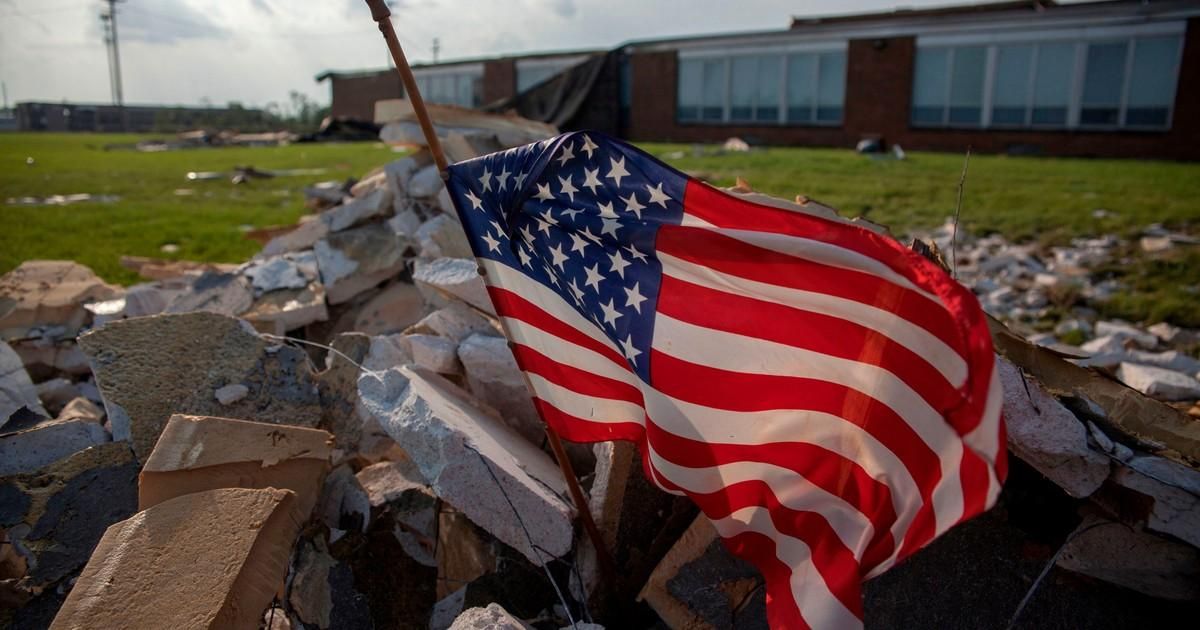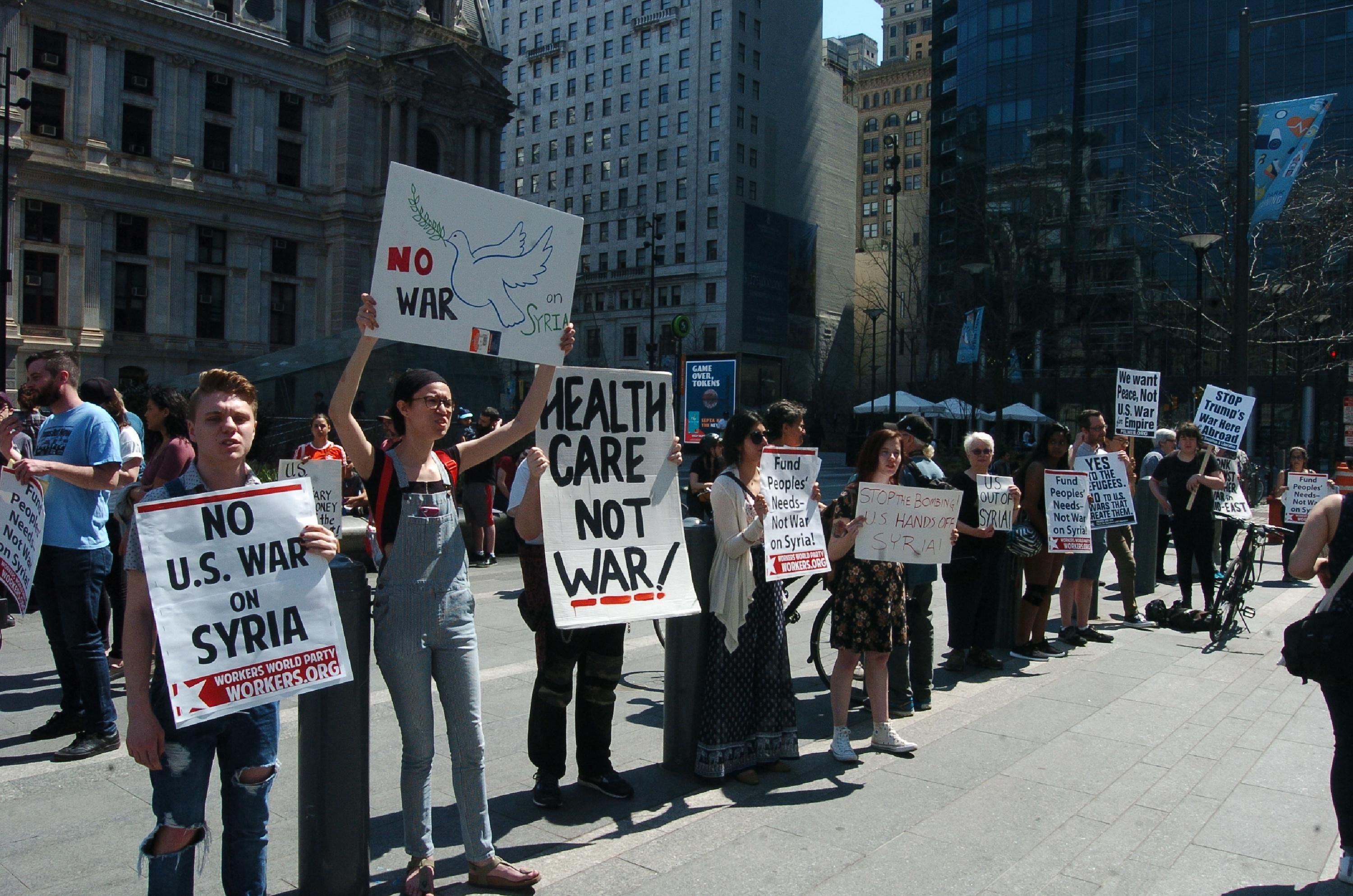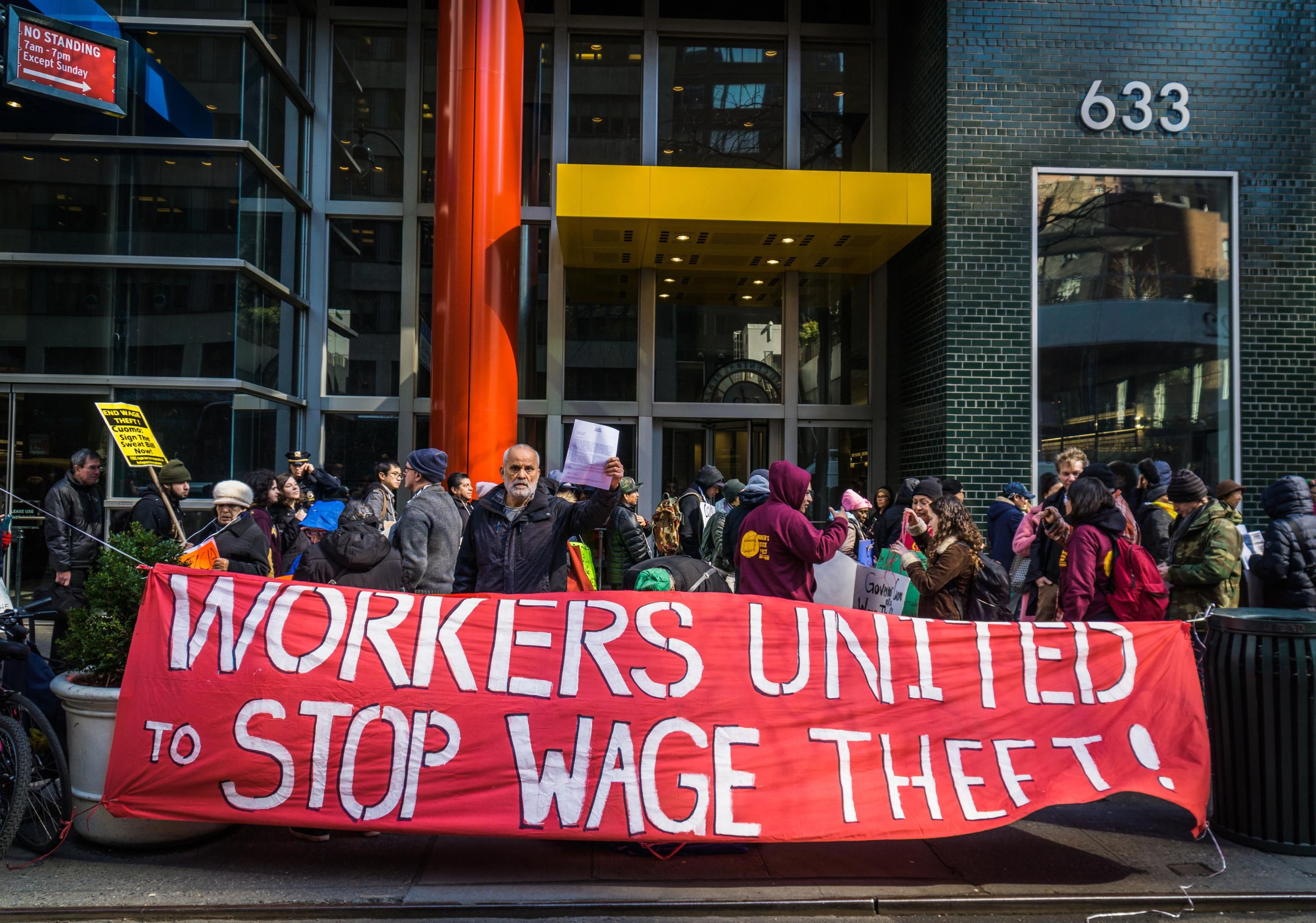President Joe Biden said the U.S. Special Forces operation killed ISIS leader Abu Ibrahim al-Hashimi al-Qurayshi.
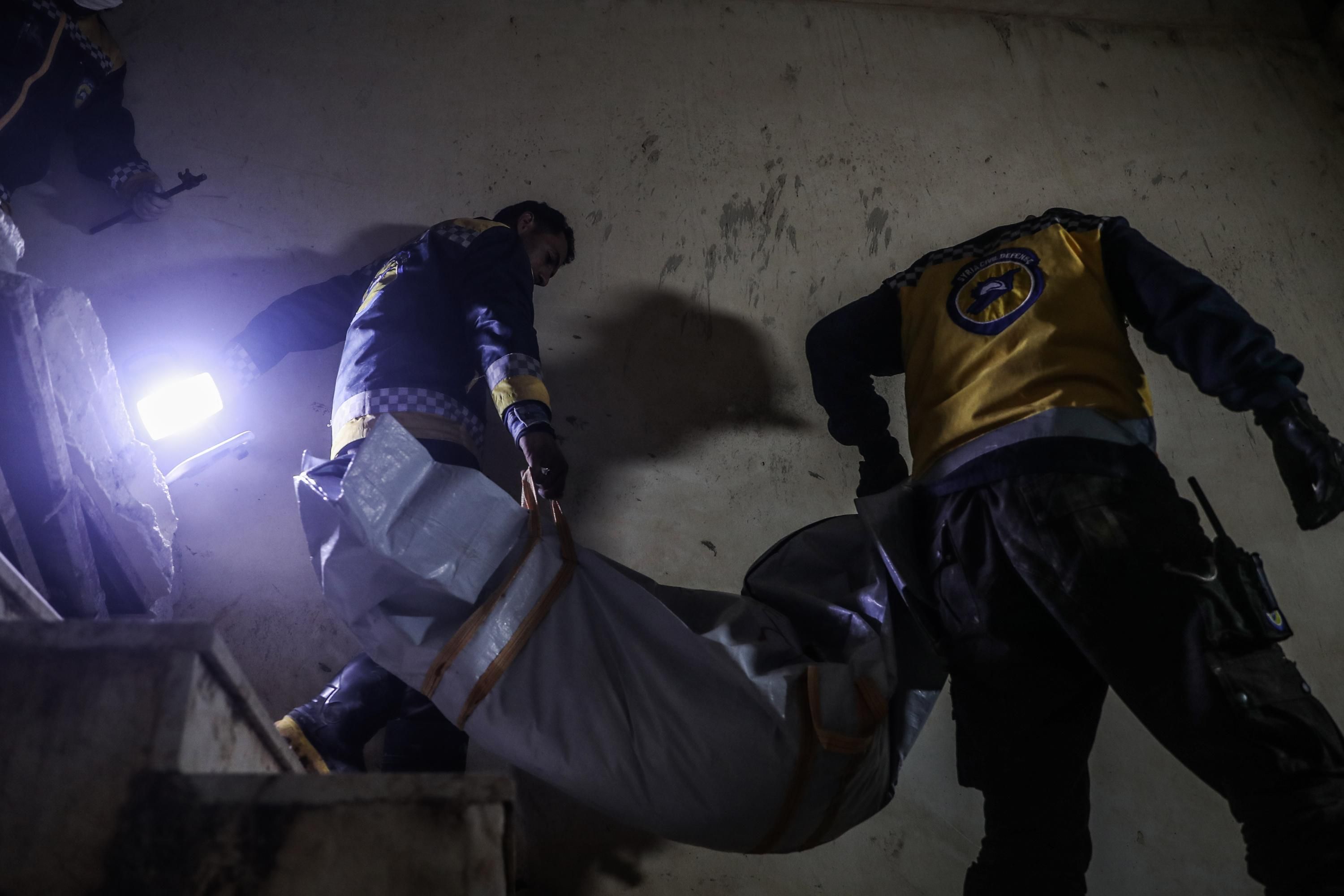
First responders carry the body of a child who was killed in a U.S. raid in northwest Syria on February 3, 2022.
(Photo: Anas Alkharboutli/Picture Alliance via Getty Images)
JAKE JOHNSON
Our work is licensed under Creative Commons (CC BY-NC-ND 3.0). Feel free to republish and share widely.
JAKE JOHNSON
COMMON DREAMS
February 3, 2022
United States Special Forces carried out a major raid in northwest Syria in the early hours of Thursday morning that reportedly resulted in the killing of more than a dozen people—including six children and four women.
In a statement hours after the operation, U.S. President Joe Biden said that "thanks to the skill and bravery of our Armed Forces, we have taken off the battlefield Abu Ibrahim al-Hashimi al-Qurayshi—the leader of ISIS."
"All Americans have returned safely from the operation. I will deliver remarks to the American people later this morning. May God protect our troops," added the president, who did not mention the reports of civilian deaths.
Addressing the nation, Biden claimed that the ISIS leader detonated a suicide bomb, killing himself and "taking several members of his family with him."
In a brief statement earlier in the morning, Pentagon Press Secretary John Kirby had confirmed that U.S. forces "conducted a counterterrorism mission" inside Syria but did not specify the target of the raid.
Kirby, who called the operation "successful," also made no mention of the reported civilian deaths, saying only that "there were no U.S. casualties." The Pentagon is notorious for underreporting or covering up civilian casualties in U.S.-led military actions.
Phyllis Bennis, director of the New Internationalism Project at the Institute for Policy Studies, told Common Dreams in an email that the notion that "the killing of 13 civilians in a supposedly counter-terror operation—including six children and four women—is somehow a 'success' flies in the face of the Biden administration's recent claim that it is making protection of civilians a new high priority in its military strategy."
"The so-called 'global war on terror' has, from its origins, been characterized by attacks by U.S. Special Forces, by airstrikes, by armed drones, and more, that routinely kill far more civilians than the targets identified on the 'kill lists' prepared by presidents and top White House officials," she continued. "The routine recitation of 'there is no military solution to terrorism' has always been an anodyne rhetorical ploy, never an actual guide to what actions might actually work to change the conditions that give rise to terrorism."
Bennis went on to note that the "death of founder and former ISIS leader Abu Bakr al-Baghdadi during a 2019 U.S. helicopter raid (which also led to civilian deaths) was quickly followed by the appointment of a new leader."
"The killing of Abu Ibrahim al-Hashimi al-Qurayshi will likely see the same result," she warned, "along with the likelihood of new recruits for ISIS emerging from the families of those other civilians killed and injured in the attack."
Local residents, first responders, and journalists who witnessed the U.S. operation Thursday said it included helicopters and F-16 warplanes, which bombed and shelled the area in northwest Syria ahead of the airdrop raid.
Graphic photos and witness accounts from the scene indicated significant carnage, with blood covering the floors and walls of a building that appeared to be a main target of the operation. Images also showed U.S.-made explosive devices scattered near the scene, including one from the Colorado-based Ensign-Bickford Aerospace & Defense Company.
The Associated Press reported that the targeted building "contained a wrecked bedroom with a child's wooden crib on the floor."
"On one damaged wall, a blue plastic swing for children was still hanging," the outlet observed. "The kitchen was blackened with fire damage."
United States Special Forces carried out a major raid in northwest Syria in the early hours of Thursday morning that reportedly resulted in the killing of more than a dozen people—including six children and four women.
In a statement hours after the operation, U.S. President Joe Biden said that "thanks to the skill and bravery of our Armed Forces, we have taken off the battlefield Abu Ibrahim al-Hashimi al-Qurayshi—the leader of ISIS."
"All Americans have returned safely from the operation. I will deliver remarks to the American people later this morning. May God protect our troops," added the president, who did not mention the reports of civilian deaths.
Addressing the nation, Biden claimed that the ISIS leader detonated a suicide bomb, killing himself and "taking several members of his family with him."
In a brief statement earlier in the morning, Pentagon Press Secretary John Kirby had confirmed that U.S. forces "conducted a counterterrorism mission" inside Syria but did not specify the target of the raid.
Kirby, who called the operation "successful," also made no mention of the reported civilian deaths, saying only that "there were no U.S. casualties." The Pentagon is notorious for underreporting or covering up civilian casualties in U.S.-led military actions.
Phyllis Bennis, director of the New Internationalism Project at the Institute for Policy Studies, told Common Dreams in an email that the notion that "the killing of 13 civilians in a supposedly counter-terror operation—including six children and four women—is somehow a 'success' flies in the face of the Biden administration's recent claim that it is making protection of civilians a new high priority in its military strategy."
"The so-called 'global war on terror' has, from its origins, been characterized by attacks by U.S. Special Forces, by airstrikes, by armed drones, and more, that routinely kill far more civilians than the targets identified on the 'kill lists' prepared by presidents and top White House officials," she continued. "The routine recitation of 'there is no military solution to terrorism' has always been an anodyne rhetorical ploy, never an actual guide to what actions might actually work to change the conditions that give rise to terrorism."
Bennis went on to note that the "death of founder and former ISIS leader Abu Bakr al-Baghdadi during a 2019 U.S. helicopter raid (which also led to civilian deaths) was quickly followed by the appointment of a new leader."
"The killing of Abu Ibrahim al-Hashimi al-Qurayshi will likely see the same result," she warned, "along with the likelihood of new recruits for ISIS emerging from the families of those other civilians killed and injured in the attack."
Local residents, first responders, and journalists who witnessed the U.S. operation Thursday said it included helicopters and F-16 warplanes, which bombed and shelled the area in northwest Syria ahead of the airdrop raid.
Graphic photos and witness accounts from the scene indicated significant carnage, with blood covering the floors and walls of a building that appeared to be a main target of the operation. Images also showed U.S.-made explosive devices scattered near the scene, including one from the Colorado-based Ensign-Bickford Aerospace & Defense Company.
The Associated Press reported that the targeted building "contained a wrecked bedroom with a child's wooden crib on the floor."
"On one damaged wall, a blue plastic swing for children was still hanging," the outlet observed. "The kitchen was blackened with fire damage."
Our work is licensed under Creative Commons (CC BY-NC-ND 3.0). Feel free to republish and share widely.






